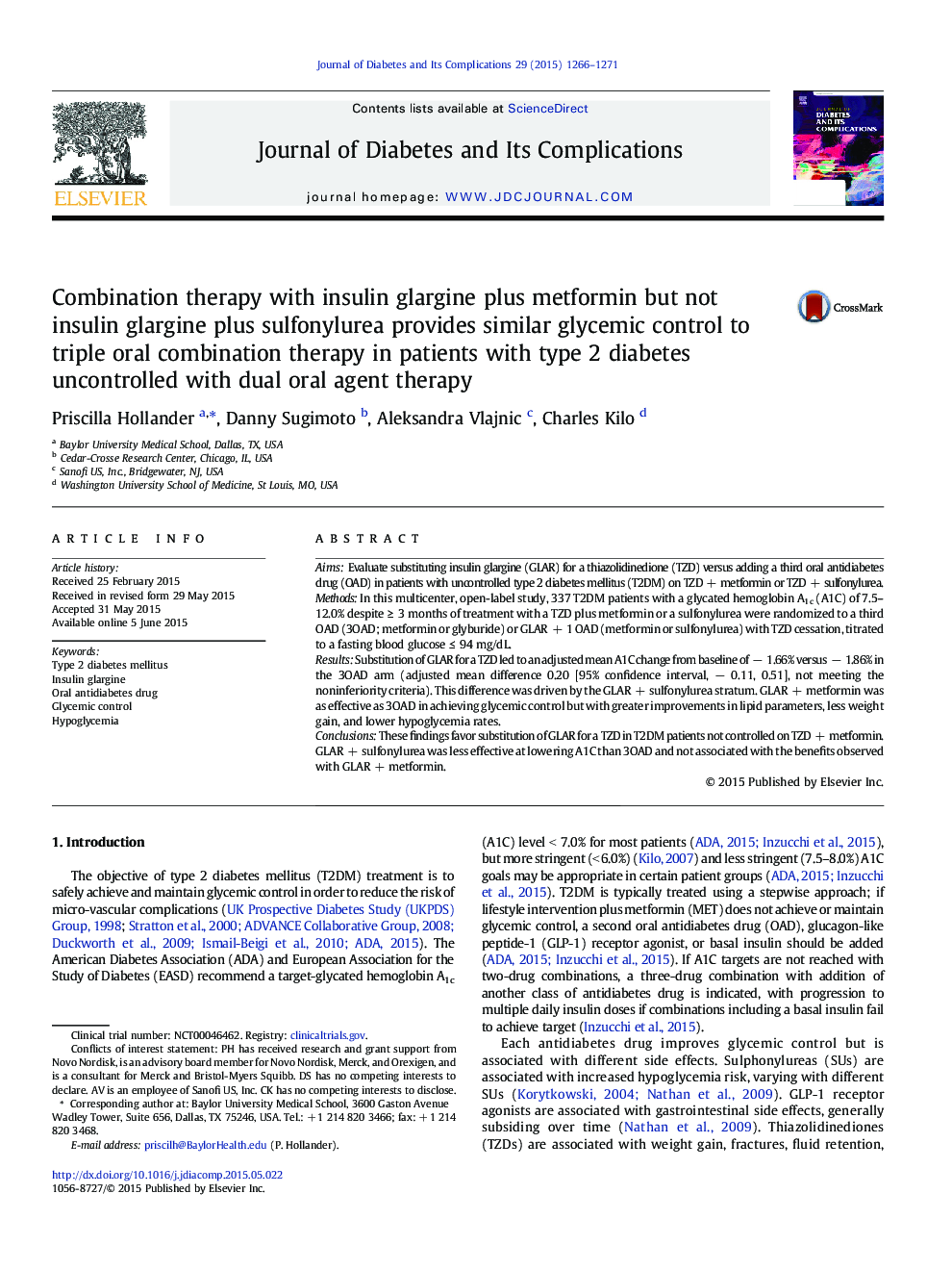| Article ID | Journal | Published Year | Pages | File Type |
|---|---|---|---|---|
| 5902373 | Journal of Diabetes and its Complications | 2015 | 6 Pages |
AimsEvaluate substituting insulin glargine (GLAR) for a thiazolidinedione (TZD) versus adding a third oral antidiabetes drug (OAD) in patients with uncontrolled type 2 diabetes mellitus (T2DM) on TZD + metformin or TZD + sulfonylurea.MethodsIn this multicenter, open-label study, 337 T2DM patients with a glycated hemoglobin A1c (A1C) of 7.5-12.0% despite â¥Â 3 months of treatment with a TZD plus metformin or a sulfonylurea were randomized to a third OAD (3OAD; metformin or glyburide) or GLAR + 1 OAD (metformin or sulfonylurea) with TZD cessation, titrated to a fasting blood glucose â¤Â 94 mg/dL.ResultsSubstitution of GLAR for a TZD led to an adjusted mean A1C change from baseline of â 1.66% versus â 1.86% in the 3OAD arm (adjusted mean difference 0.20 [95% confidence interval, â 0.11, 0.51], not meeting the noninferiority criteria). This difference was driven by the GLAR + sulfonylurea stratum. GLAR + metformin was as effective as 3OAD in achieving glycemic control but with greater improvements in lipid parameters, less weight gain, and lower hypoglycemia rates.ConclusionsThese findings favor substitution of GLAR for a TZD in T2DM patients not controlled on TZD + metformin. GLAR + sulfonylurea was less effective at lowering A1C than 3OAD and not associated with the benefits observed with GLAR + metformin.
